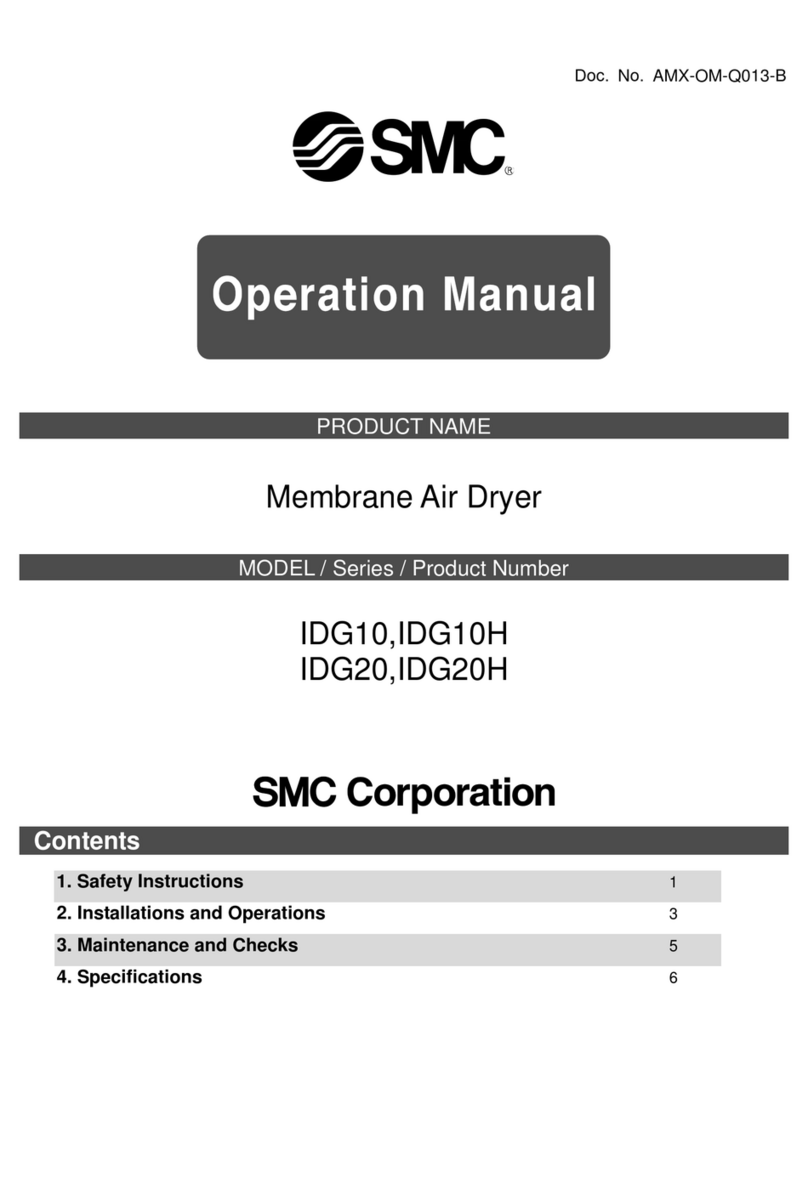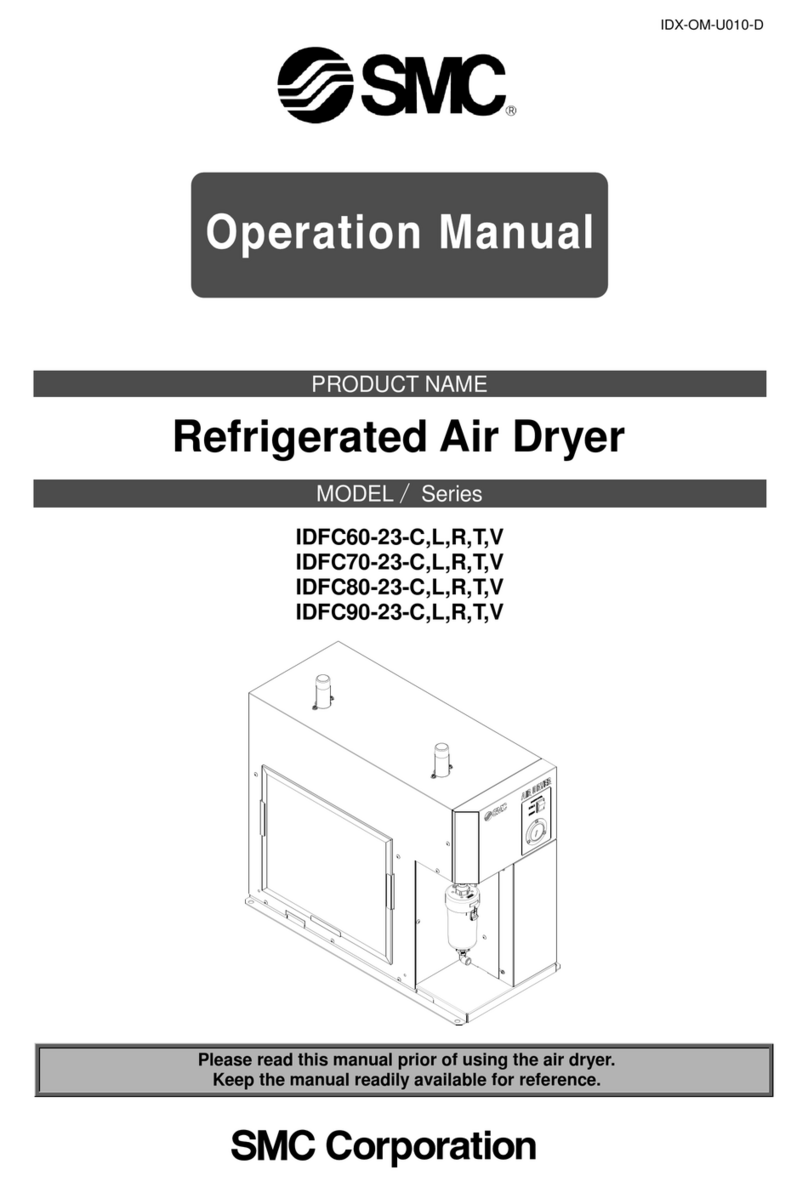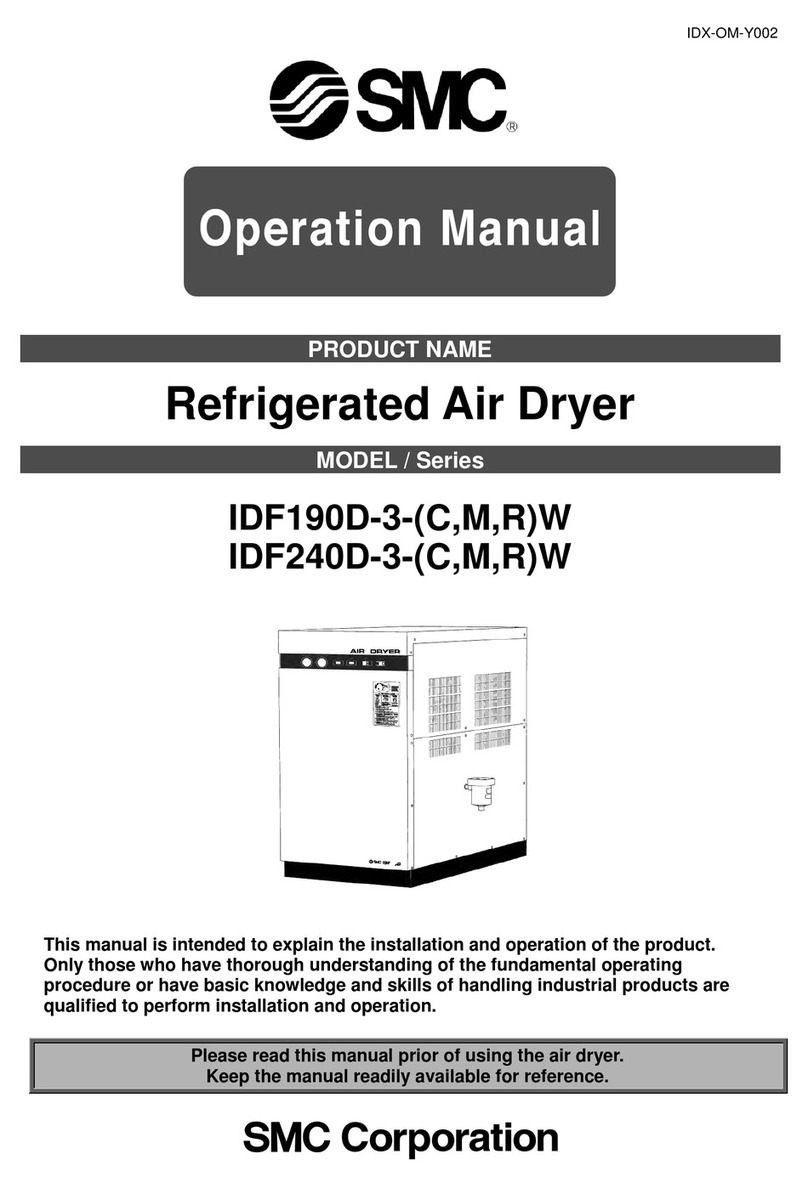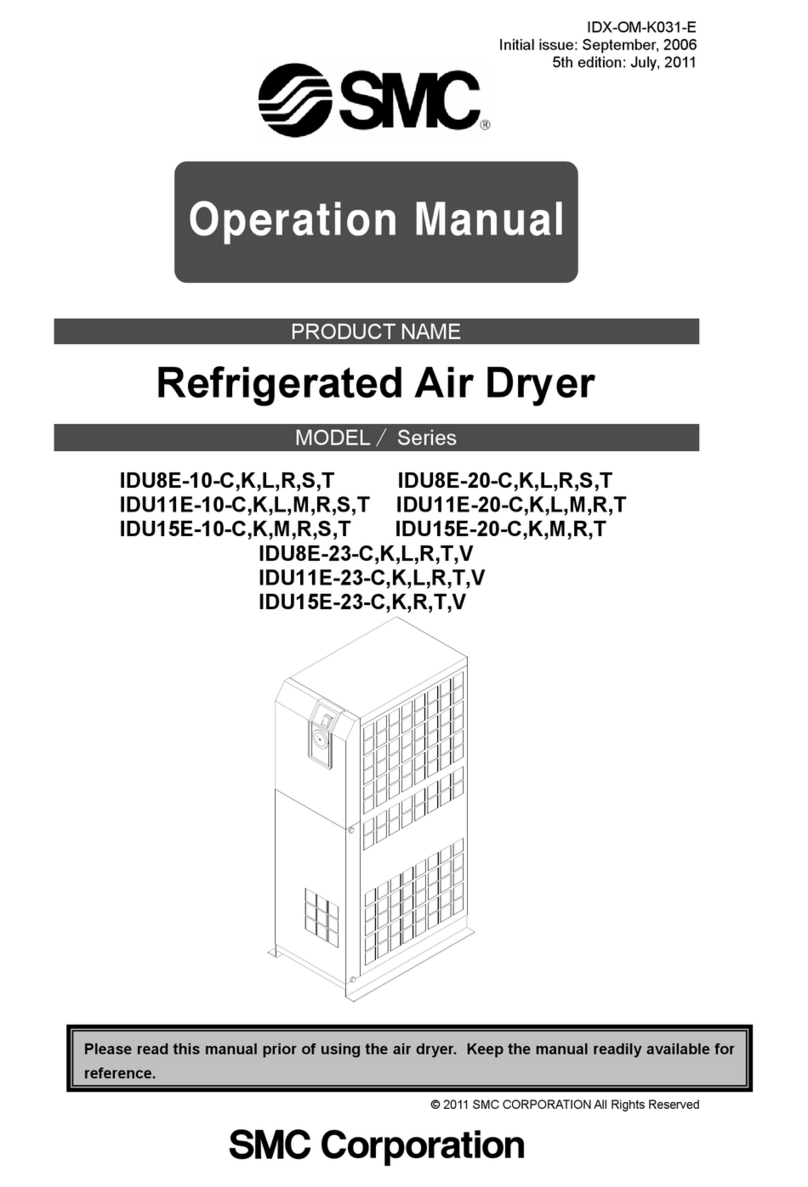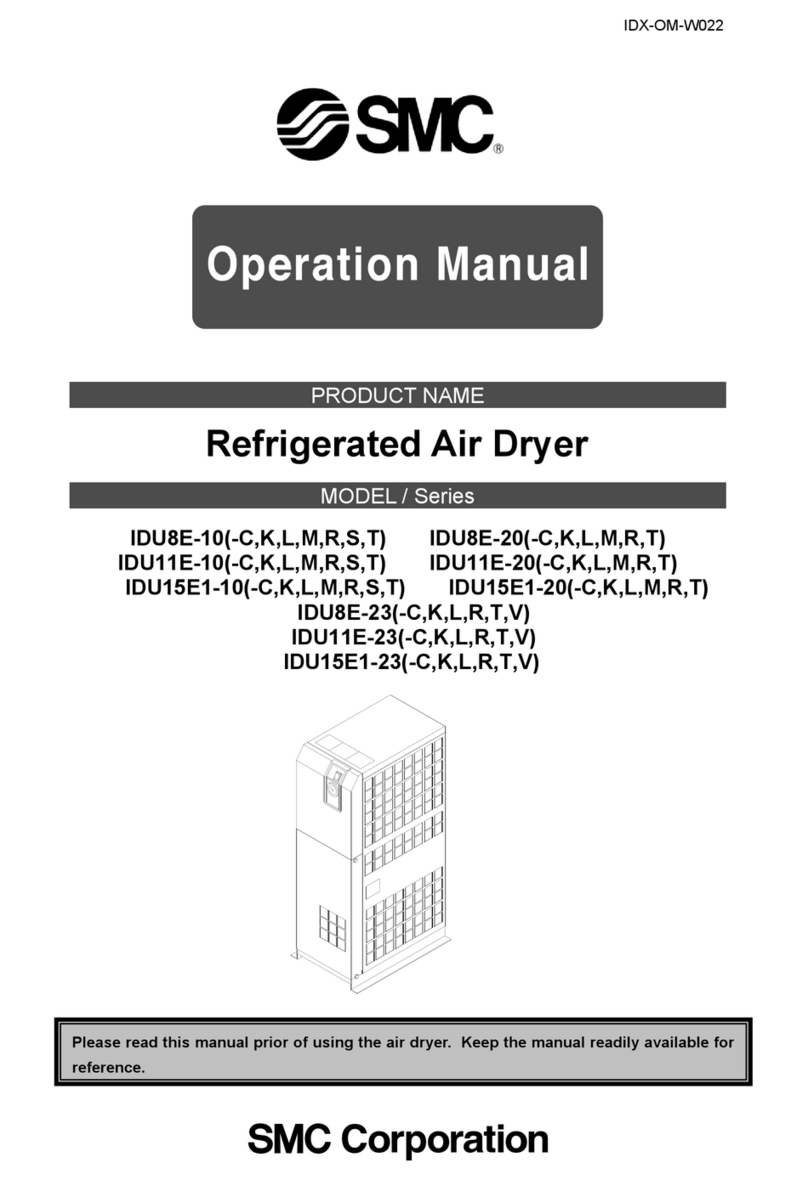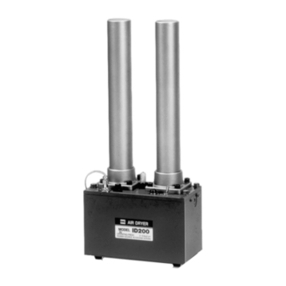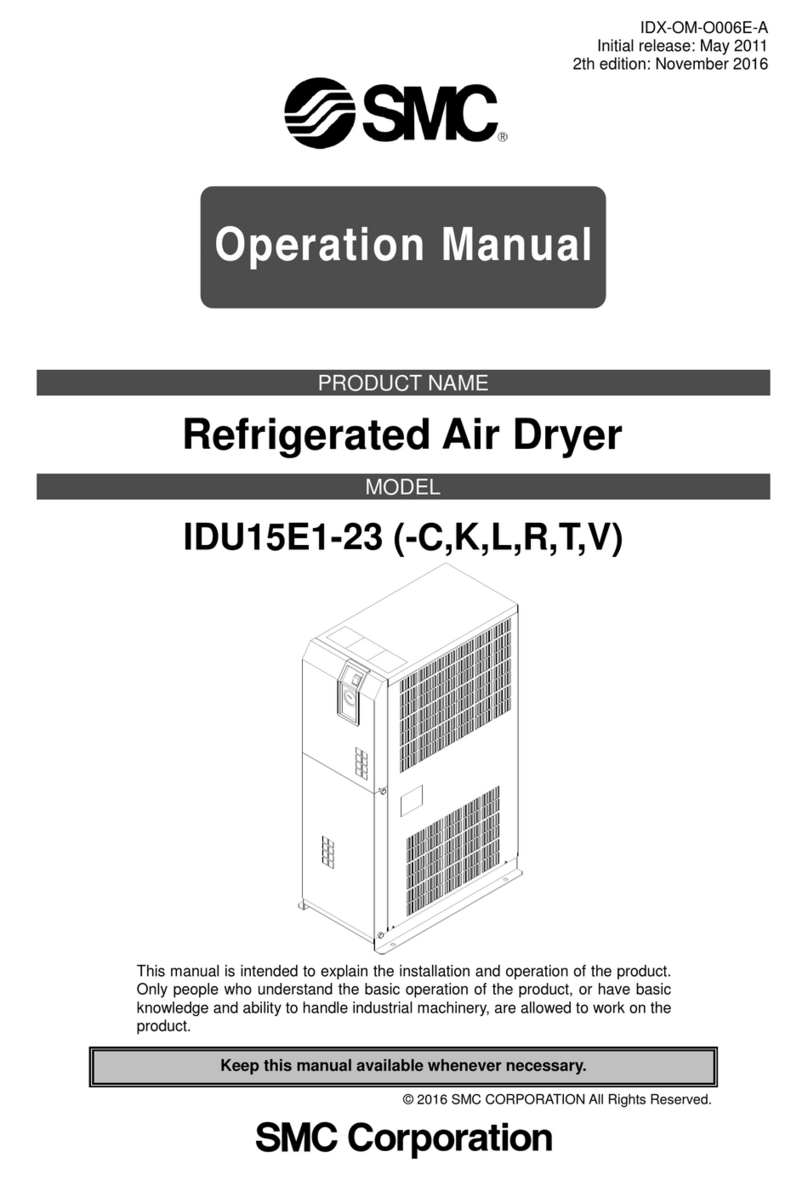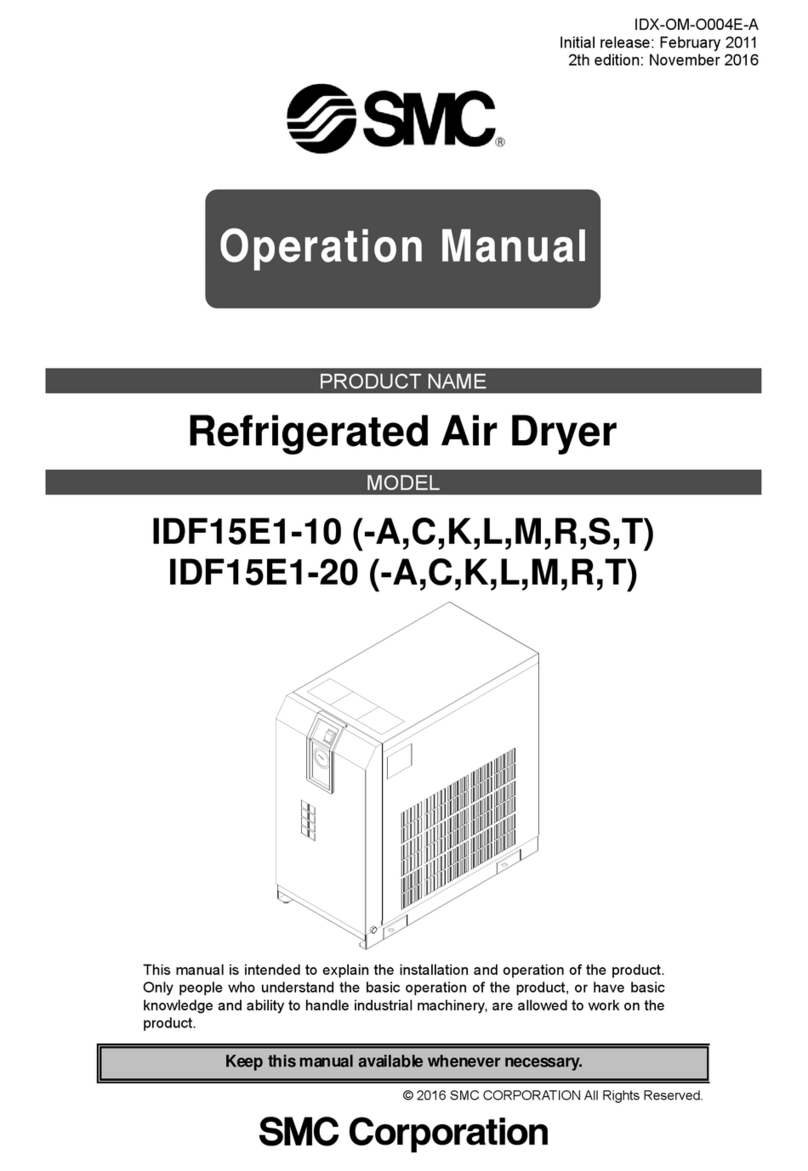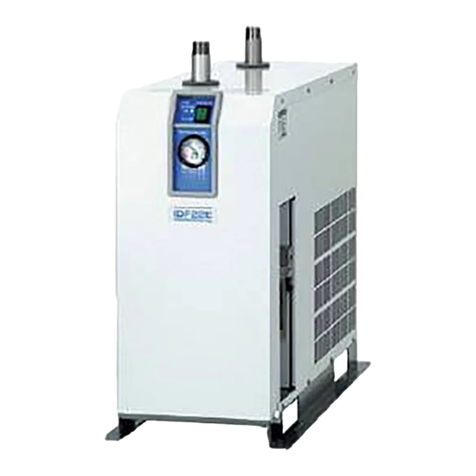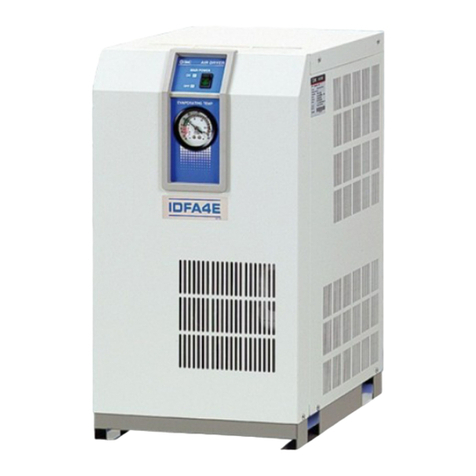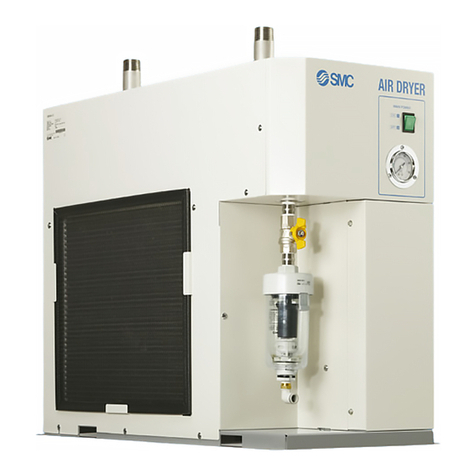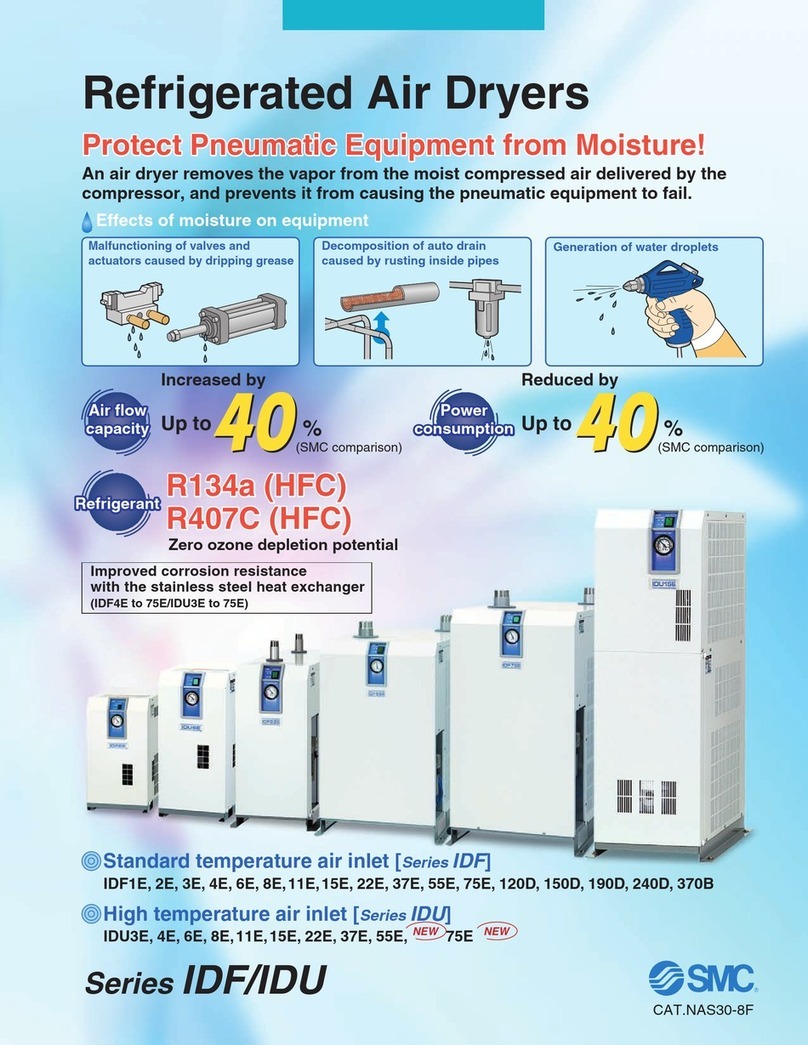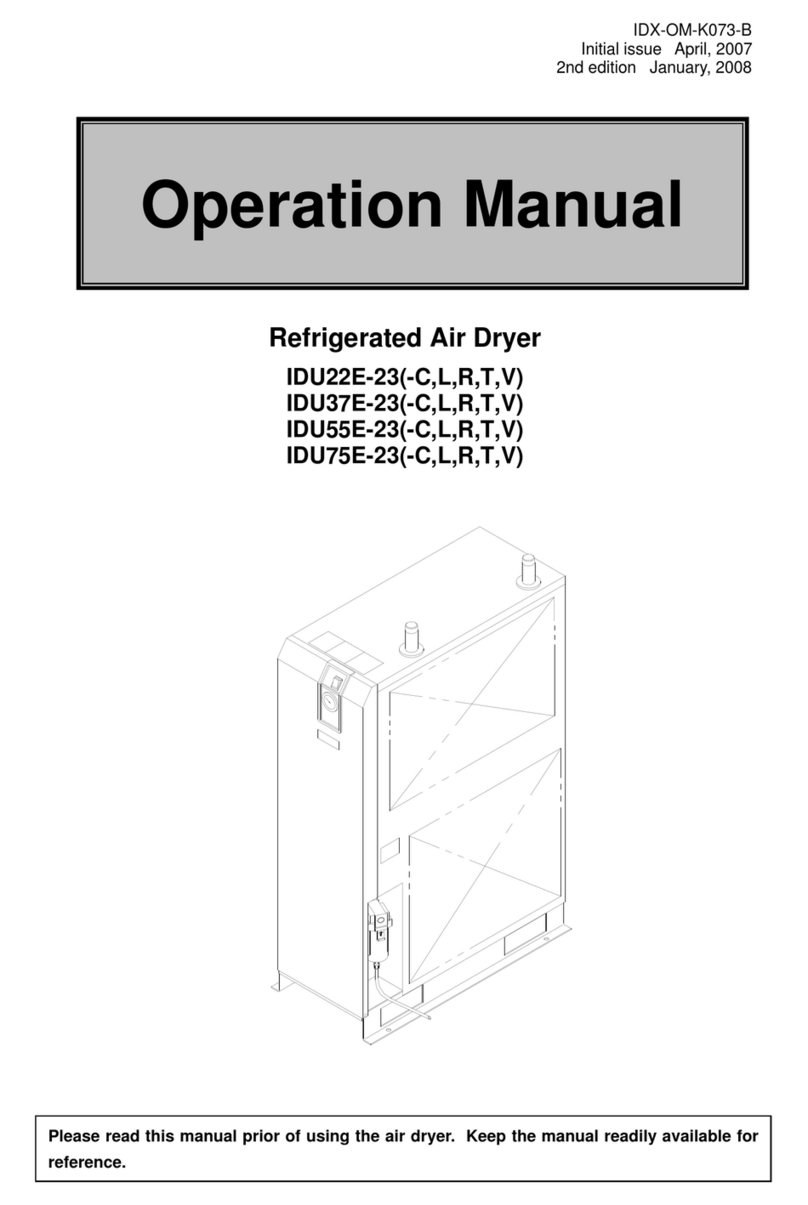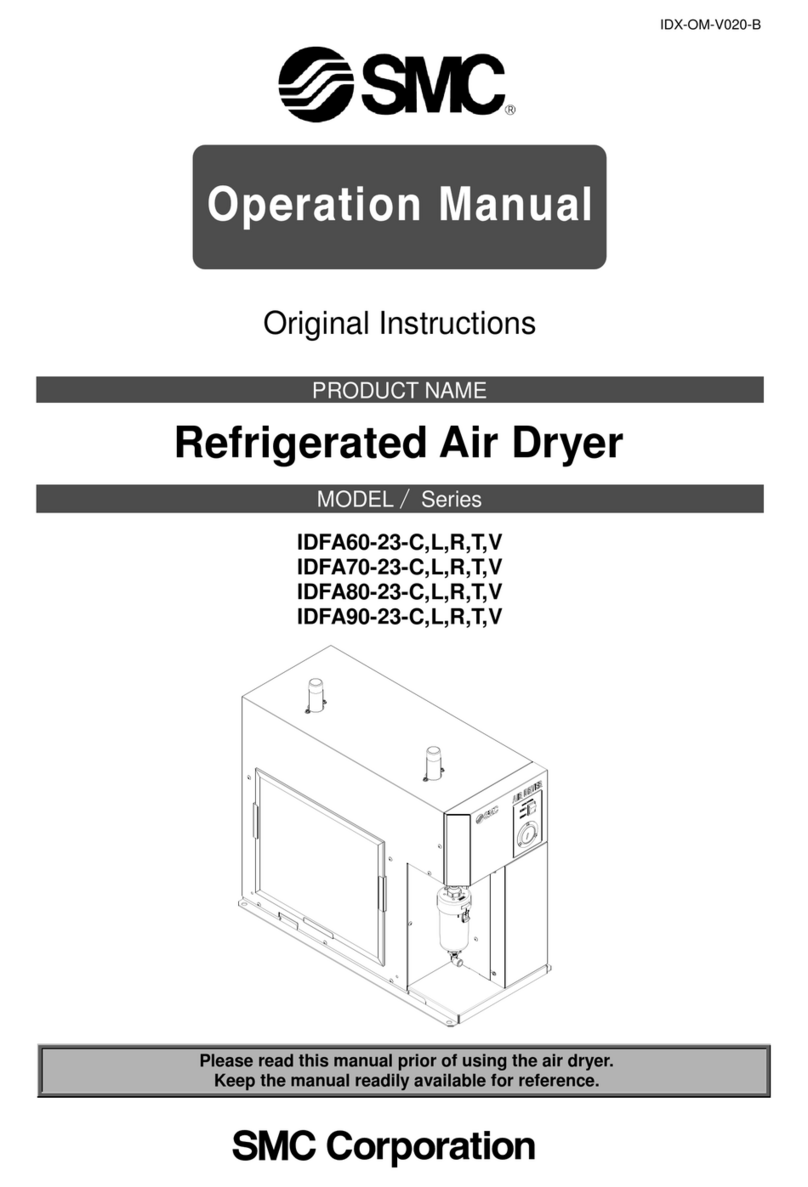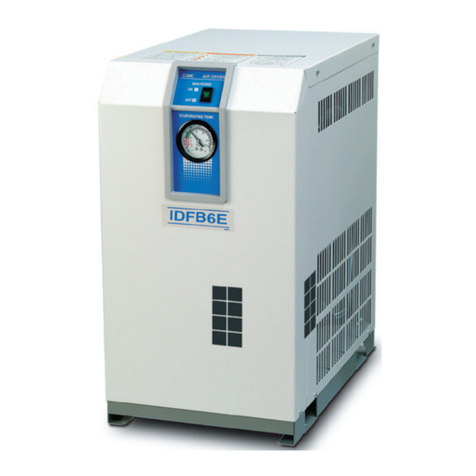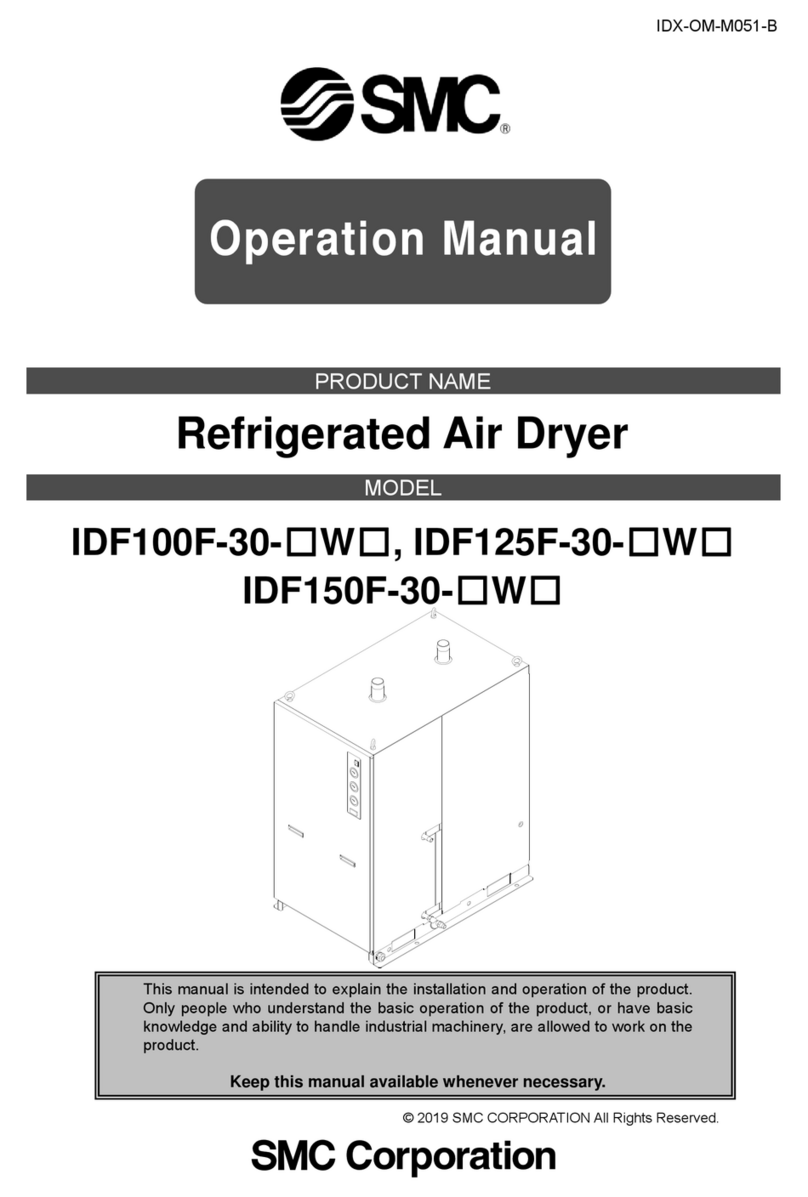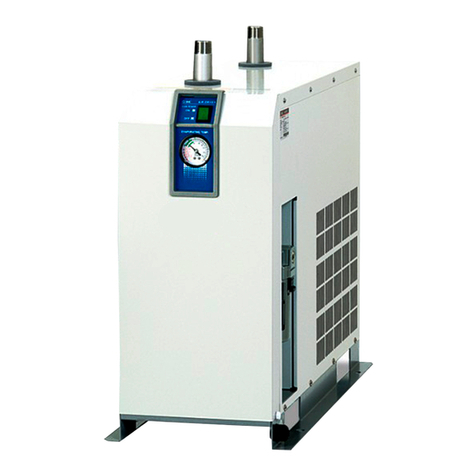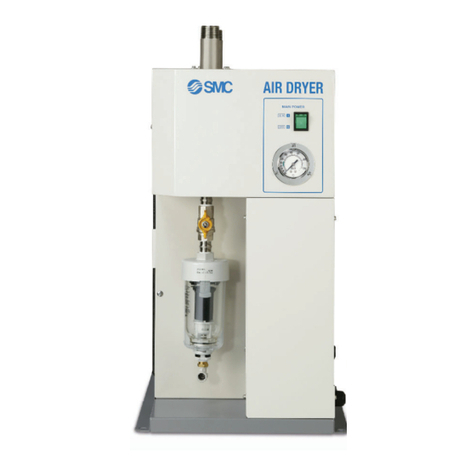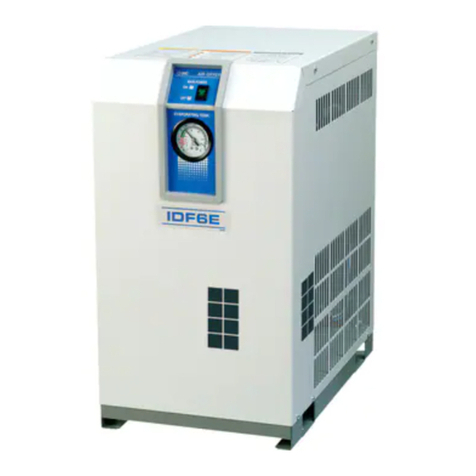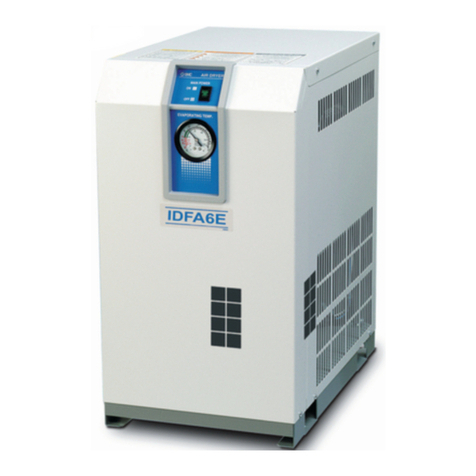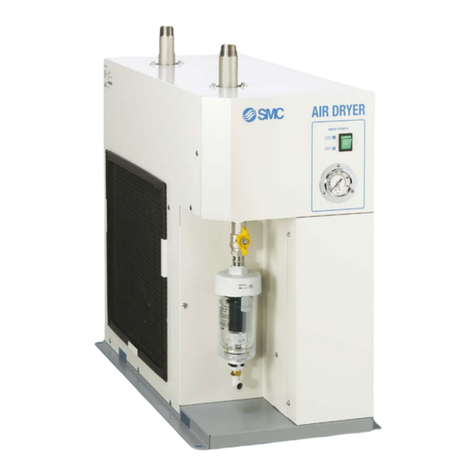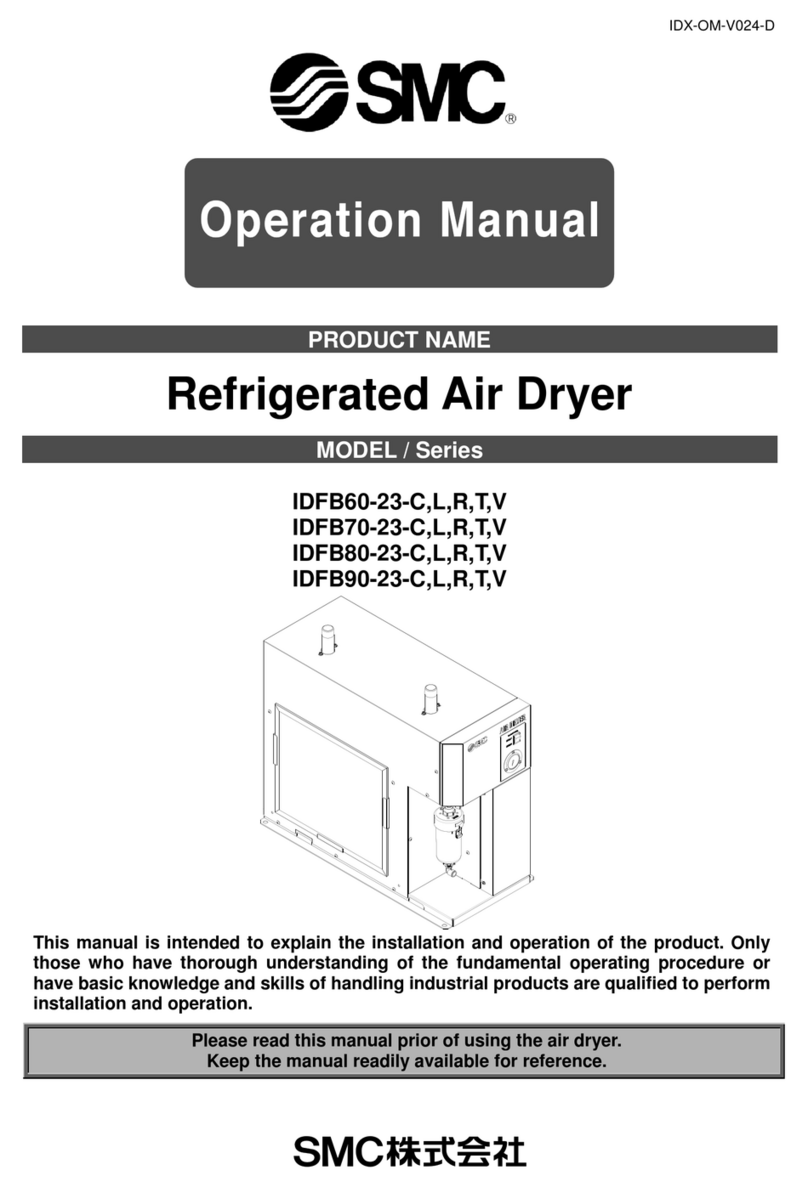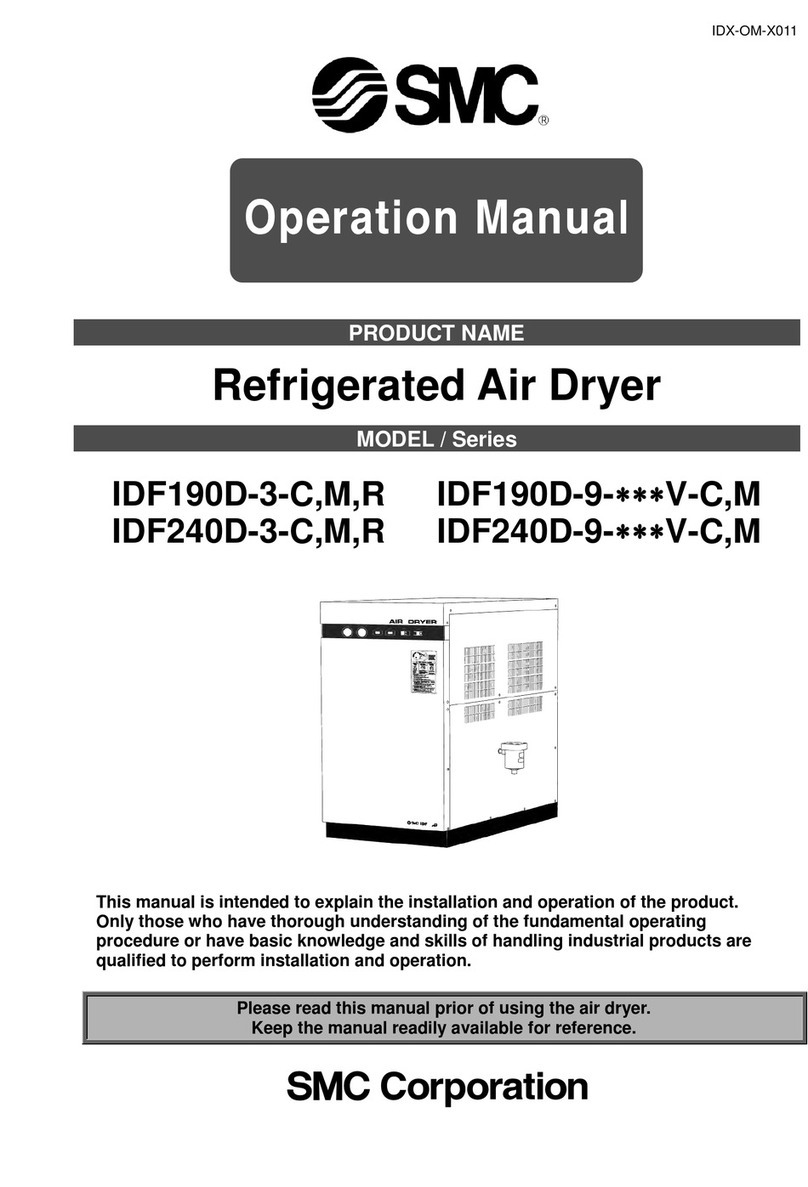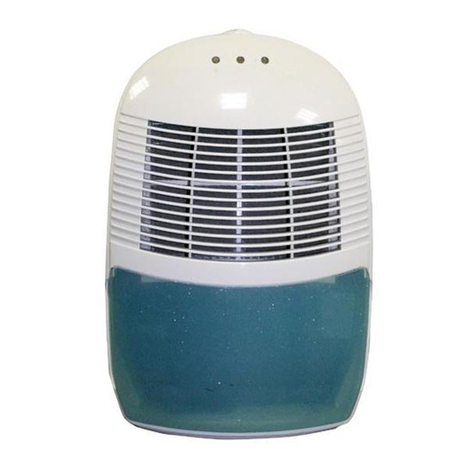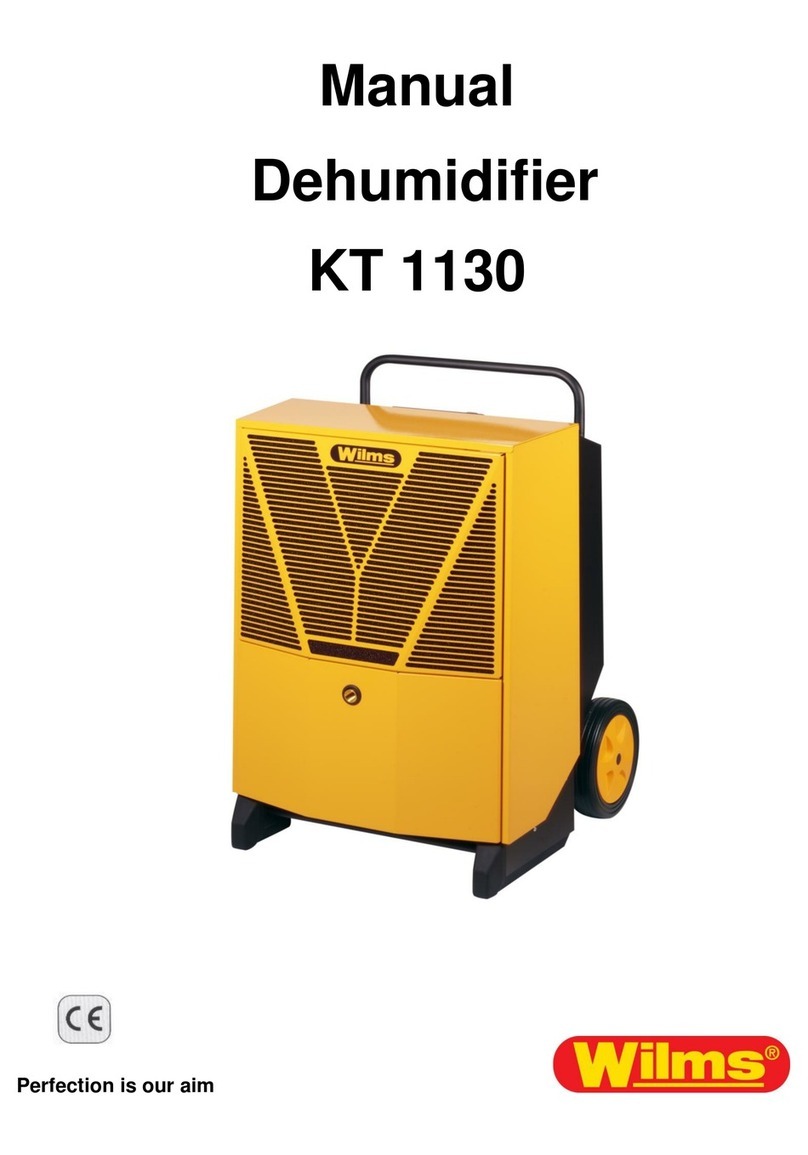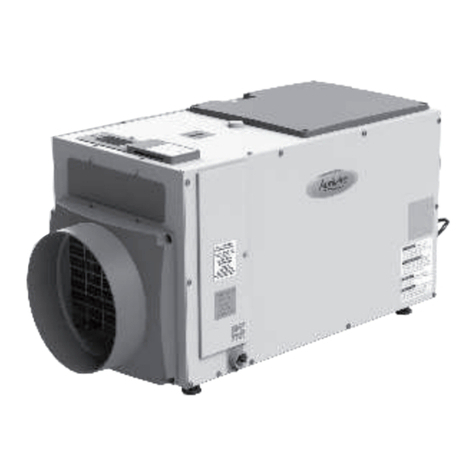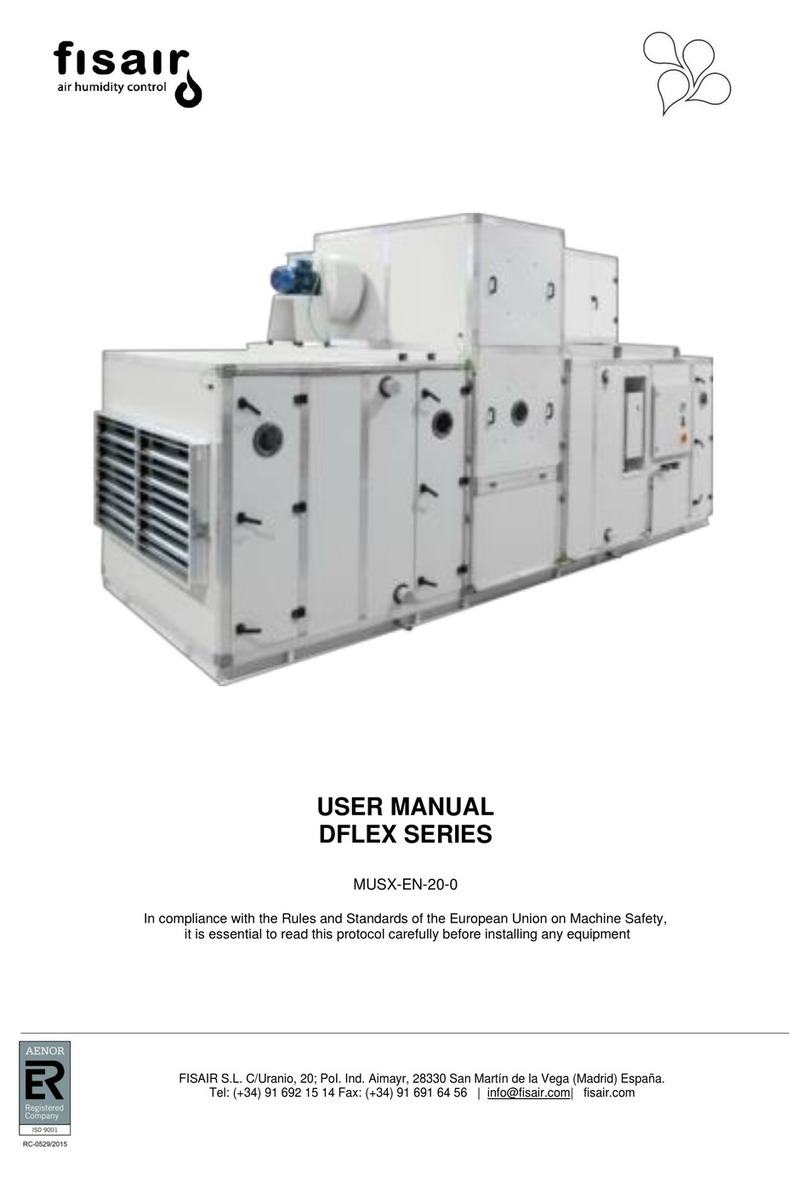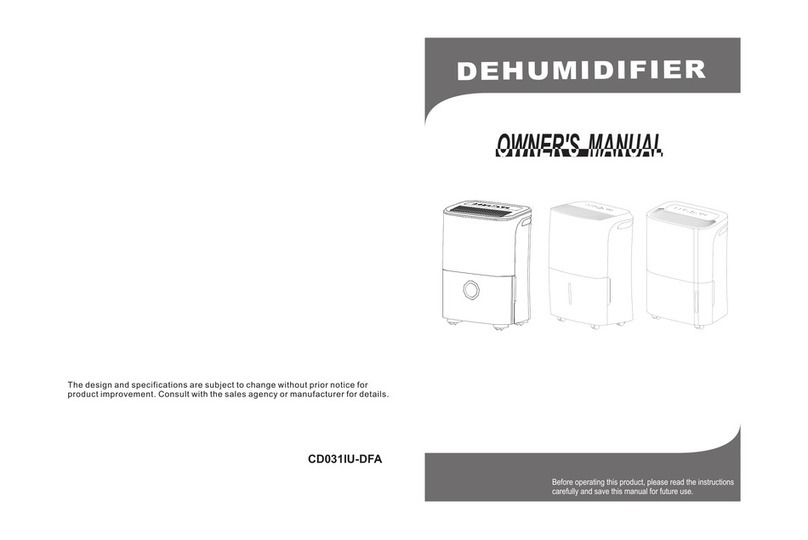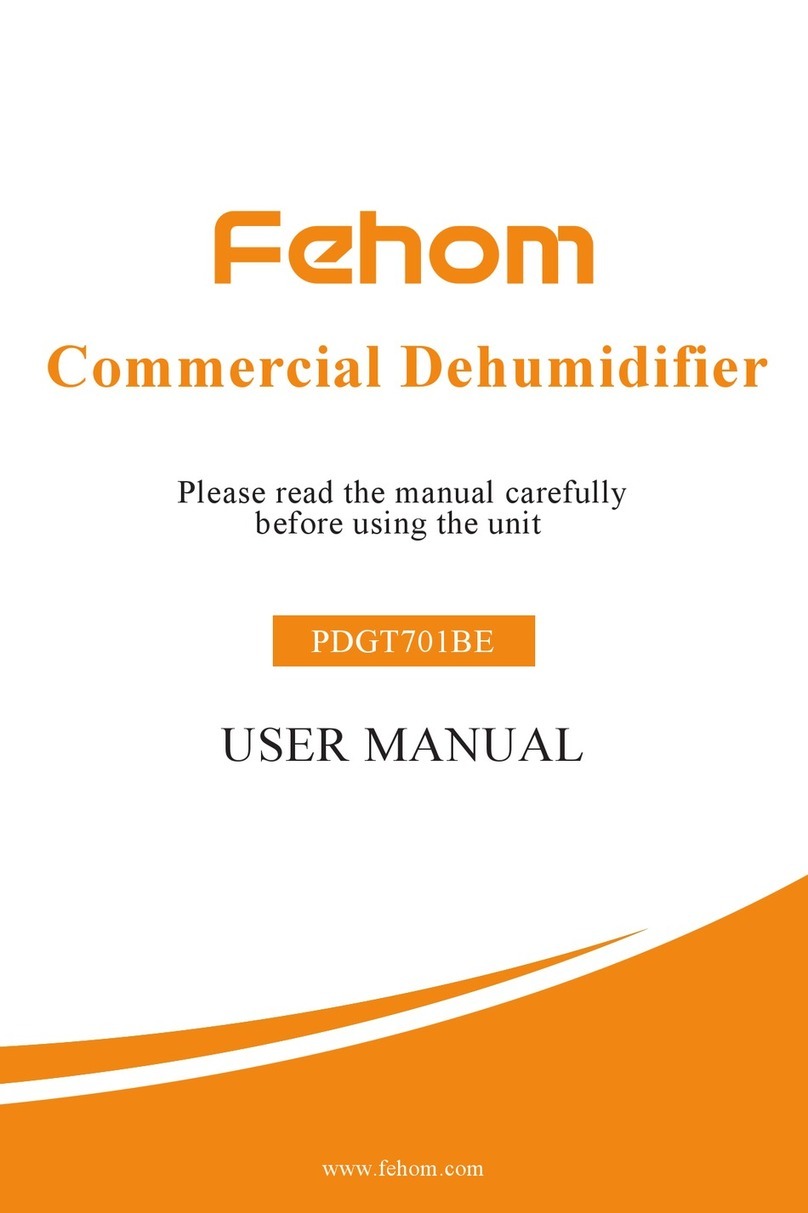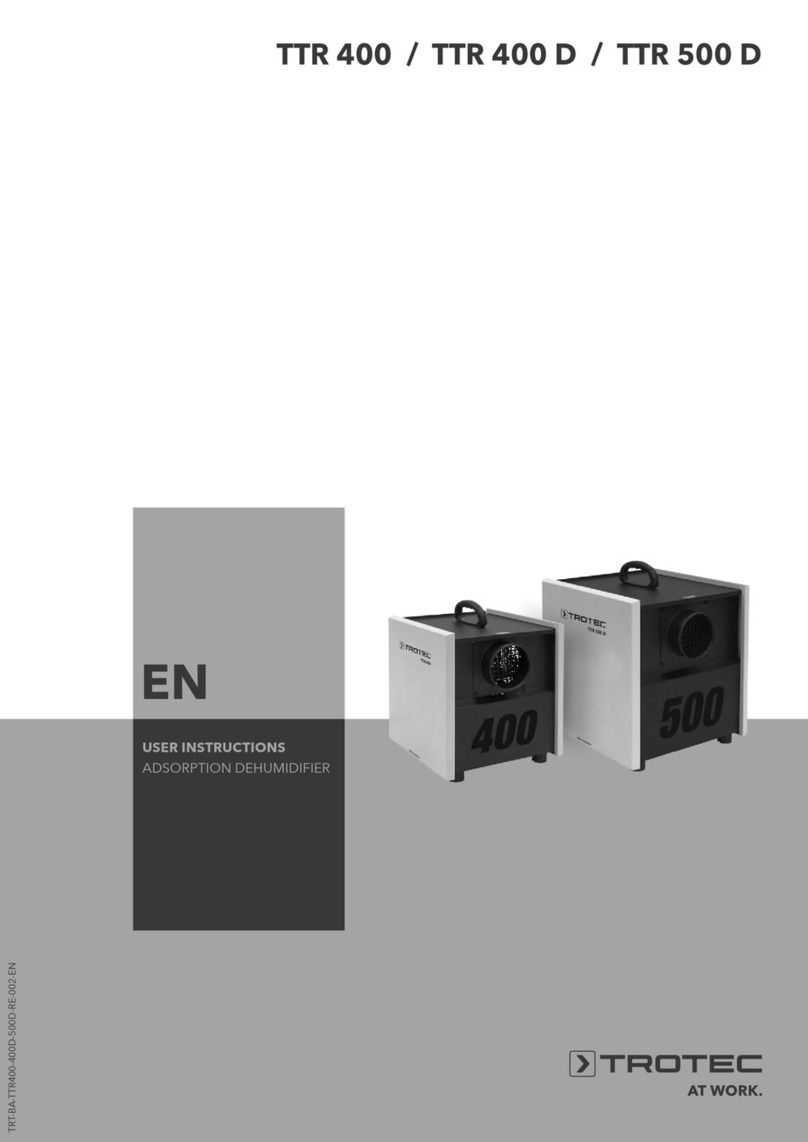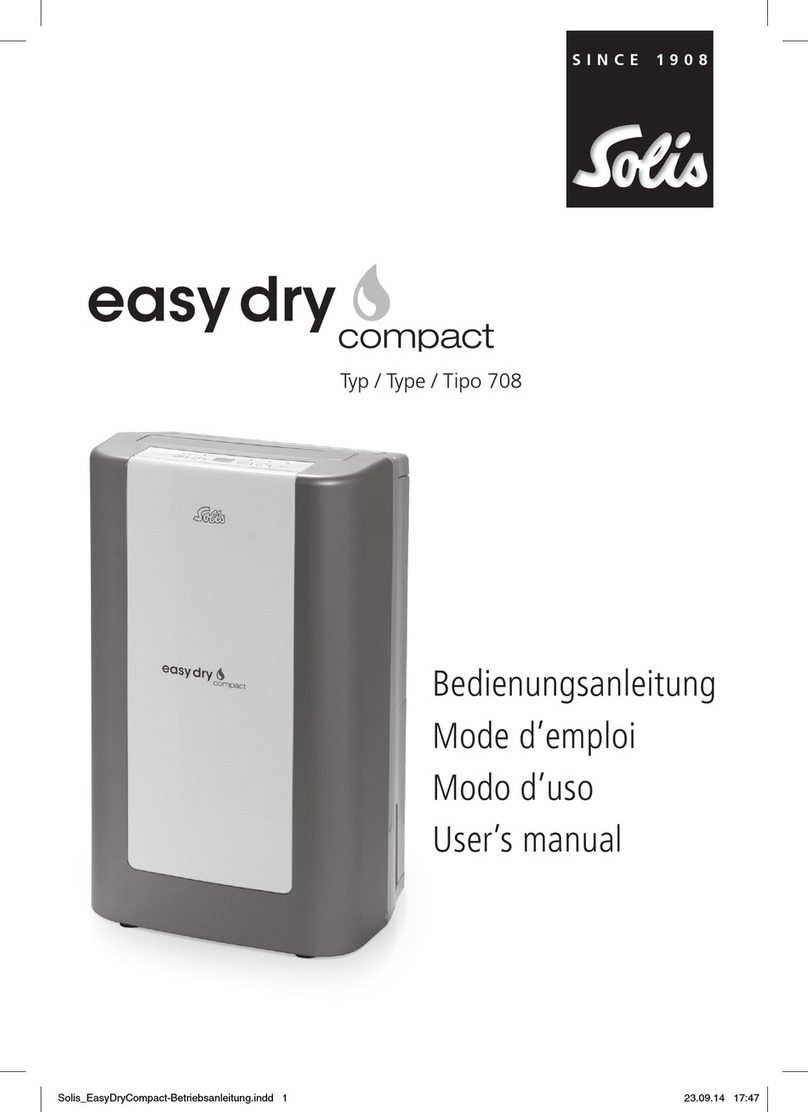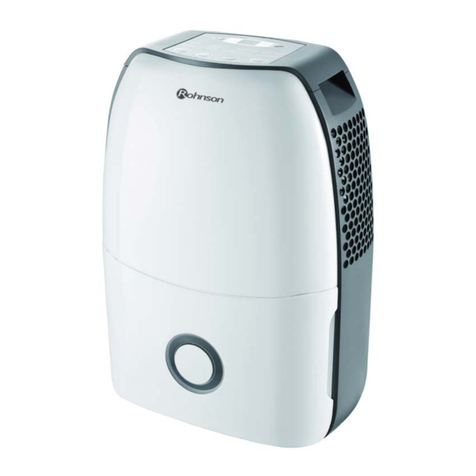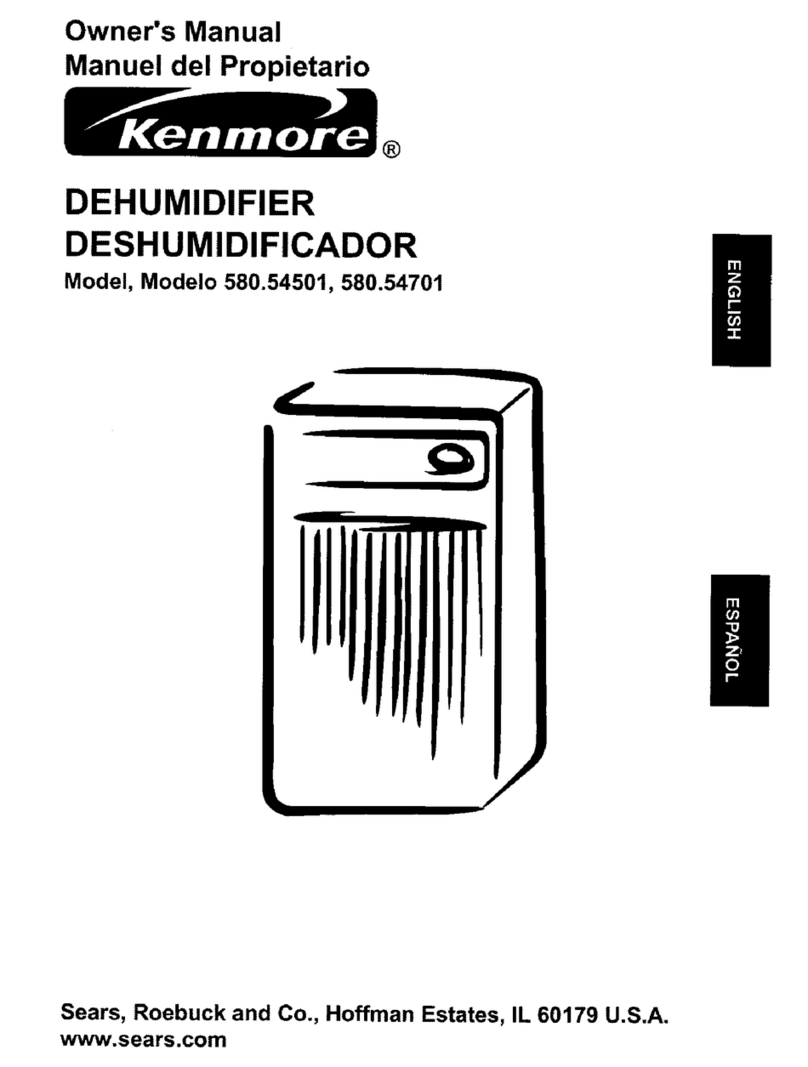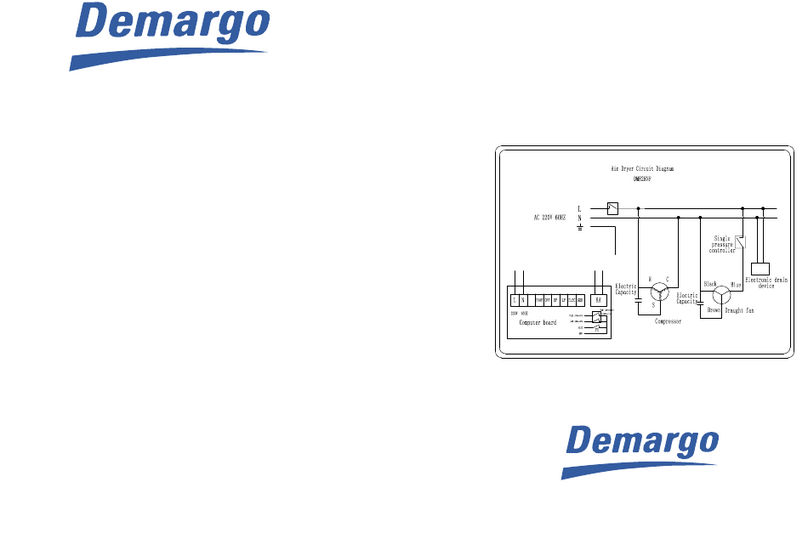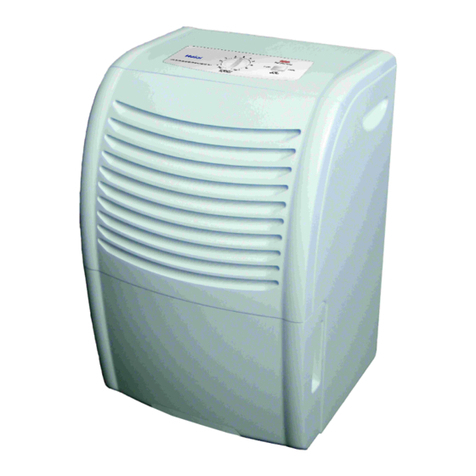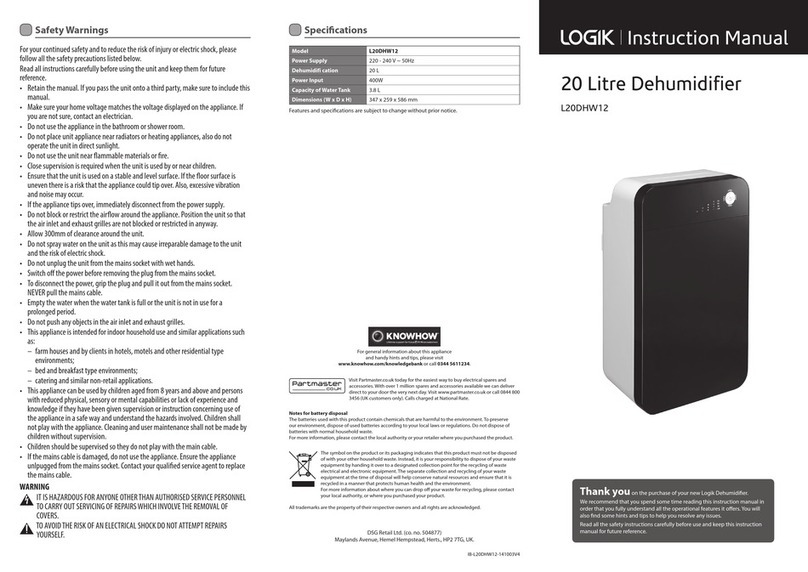
2. Installations and Operations
-4-
2. Installations and Operations:
Piping
Warning
a. Confirm locking of case and body
When using in a unit, be sure to set the air pressure to
zero before using a Mist Separator or Micro Mist
Separator with modular connections. Also, confirm that
the body and case are locked together with a click
before starting the flow of compressed air.
b. Confirm tightening of the holder.
Before starting the flow of compressed air, turn the
Membrane air dryer’s holder in its tightening direction,
confirming that it is completely tightened and that the
case will not come off.
c. Exhaust the purged air discharge (Option : P)
The piping of purge air for dehumidification and for the
dew point checker can be combined, but do not
combine it with compressed air lines or drain piping or
merge the purge air with exhaust air from other
equipment. Back-pressure through the purged air
exhaust port can cause damage or poor performance.
Caution
a. Use of tools
Hold the upper portion of the body (aluminum
die-casted section) with a spanner or adjustable angle
wrench. Do not turn it while holding the case section.
b. Drain piping for separators
Use a tube of the prescribed size and keep the length
within 5 meters or less when installing drain piping for
Mist Separators or Micro Mist Separators. Be sure that
the tube does not rise up or become folded over.
c.
Flush pipes before installation.
Use an air blower to flush the piping to thoroughly
remove any cutting chips, cutting oil, or debris from the
piping inside, before connecting them. If they enter the
inside of products, they could cause products to
malfunction, lower performance or damage the
element.
Air Supply
Caution
a. Compressed air supply capacity
An air source that has a supply capacity that is larger
than the “necessary outlet air flow rate (dry air flow
rate) + purge air flow rate” is required. See the purge
air flow rate diagram in the catalog for the purge air flow
rate.
b. Avoid chemical substances which have an adverse
effect on the product
The chemical substances stated in the table below can
reduce the performance or damage the membrane
element. Do not use the membrane dryer in an
environment containing these chemicals substances.
Type Harmful Substances
Solvent
Acetone, Benzene, Phenol, Toluene,
Trichloroethylene, Xylene, Cresol, Thinner,
Aniline, Chloroform, Ethyl Alcohol, Methyl
Alcohol, Chlorobenzene, Trichloroethane,
Ethylbenzene, Isopropyl Alcohol, Dioxane,
Tetrahydrofuran, Methyl Chloride,
Cyclohexanone, Carbon Tetrachloride, Methyl
Ketone, Ethyl Ketone, etc.
Acid Sulfuric Acid, Nitric Acid, Hydrochloric Acid,
Acetic Acid, Lactic Acid, Chromic Acid, etc.
Gas Chlorine, Sulfurous Acid, Hydrogen Sulfide,
Bromine, Ozone, Ammonia, etc.
Oil Hydraulic Fluid (Phosphoric Ester), Fuel Oil,
Water Soluble Cutting Fluid (Alkaline),
Kerosene, etc.
Strong
Bases
Lithium hydroxide, Sodium hydroxide,
Potassium hydroxide, Calcium hydroxide, etc.
Others
Anaerobic thread lockers
Operating Environment
Caution
a. Do not use at temperatures (fluid or ambient
temperatures) higher than the prescribed operating
conditions.
Resin is used in the membrane module (element), and
it can be damaged by operation at high temperatures.
confirm that the fluid temperature does not exceed the
membrane dryer’s range of operating conditions during
use, especially when installed immediately after a
reciprocating type air compressor.
b. Keep the inlet air temperature lower than the
ambient temperature.
Condensation and water drops may accumulate inside
of the membrane dryer’s body and reduce its
dehumidification capacity if the membrane air dryer’s
body is cooled by the ambient air.
